2007 ROTC Hall of Fame Inductees
Col. Robert J. Coy, Houghton College Class of 1985
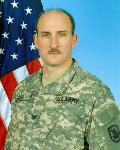
Robert J. Coy was born in Columbus, Ohio on 25 June 1963. He graduated as a Distinguished Military Graduate of Houghton College in May 1985 with a Bachelor of Arts degree in Mathematics.
He was commissioned an Air Defense Artillery Second Lieutenant through the St. Bonaventure University Army ROTC program and attended the Air Defense Artillery Basic Course at Fort Bliss, Texas.
Upon graduation from the Basic Course, he was assigned as a Stinger Section Leader with the 1st Squadron, 2nd Armored Cavalry Regiment in Bindlach, Germany. After serving in that position for one year, he transferred to the 2nd Battalion 59th Air Defense Artillery Battalion, 1st Armored Division in Schwabach, Germany, where he served as a Chaparral/Vulcan Platoon Leader and Assistant S3 before returning to Fort Bliss for the Air Defense Artillery Advanced Course.
In December 1989, after completion of the Advanced Course, he moved to Fort Lewis, Washington where he was assigned as Battalion S4 with the 1st Battalion 44th Air Defense Artillery, 9th Infantry Division (Motorized).
In July 1991 he took command of E Battery, 44th Air Defense Artillery, 199th Separate Infantry Brigade (Motorized), where he served until May 1993. After relinquishing command, he served a short time as Squadron S3 with the 2nd Armored Cavalry Regiment (Light) before relocating to Fort Leavenworth, Kansas, where he joined the U.S. Army Training and Analysis Command.
In June 1994, Coy left the active component and joined the Army Reserve’s 4th Brigade, 91st Division (Field Exercise) at Fort Lewis. He served in numerous positions, to include Plans Officer, Battalion S1, Chemical Team Commander, and Brigade S4. In October 1996, he was promoted to major and was branch transferred to the Chemical Corps.
In August 1999, he left the Army Reserve and joined the Washington Army National Guard and was assigned as Battalion Executive Officer with the 420th Chemical Battalion, then as the Deputy Chief of Staff for Operations – Training. After a successful command of the 420th Chemical Battalion. Coy took command of the 56th Information Operations Group on 1 October 2005.
Coy was selected to attend the U.S. Army War College in residence from 2005 to 2006 and is the first graduate of the Houghton College ROTC Partnership Program to attain the rank of colonel/O6.
COL Coy is married to the former Jean Ladderud and they have two children, Joshua, age 9 and Rachel, age 7. Throughout his career, he has remained active in the Officers Christian Fellowship program. An area underwriting manager for Safeco Insurance, Coy and his family currently reside in Renton, Washington.
He is a graduate of the Command and General Staff College and the Army War College, and his military awards include the Meritorious Service Medal (2nd Oak Leak Cluster), the Army Commendation Medal (2nd Oak Leaf Cluster), the Army Achievement Medal (2nd Oak Leaf Cluster), the Army Reserve Component Achievement Medal, the National Defense Service Medal, the Overseas Service Ribbon, and the Army Service Ribbon.
GS3 Clerk Typist Linda Jennings
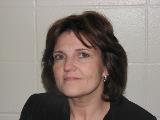
Originally from Alfred Station, New York, Linda Jennings joined the cadre of the St. Bonaventure University Army ROTC Department in October 1976 as a GS3 clerk typist.
During her 30-year career, Jennings implemented numerous programs and procedures to continually improve the administrative support provided to St. Bonaventure University’s ROTC cadets and their cadre. She has assisted with the actions of more than 700 cadets as they have transitioned from college students to commissioned Army second lieutenants. When considering the number of college students who participate in the ROTC program that do not seek commissions, the number of students she has assisted is compounded several times. In her dual role of supporting both the cadets and cadre of the Seneca Battalion, she has affected these service members’ careers and improved their quality of life while assigned to ROTC at St. Bonaventure University.
Jennings never limited herself to completing only the tasks required by her job description. Recognized by every Seneca Battalion professor of military science as an invaluable asset in providing continuity, she has been a dependable, familiar and competent asset to the Seneca Battalion. Well respected by her peers, human resource assistants from many institutions in the Eastern ROTC Region frequently call upon her to clarify procedures and requirements and to answer questions about the many aspects of the Army ROTC program.
She relates well to the cadets and their families, providing a welcoming environment for them and earning their admiration and respect. Through her contact with many former cadets, Jennings continues to demonstrate her commitment to the mission of Army ROTC at St. Bonaventure.
Her many awards include: Commander’s Award for Civilian Service, Achievement Medal for Civilian Service, Certificate of Achievement, Employee of the Quarter, and numerous Special Act and Performance Awards for outstanding support. In 2004 she was recognized by the Secretary of Defense when she was presented the Army’s Superior Civilian Service Award, the third highest award given Department of Defense career employees.
She has two sons, Ryan (24) and Dan (21).
Col. (Ret.) Francis J. Kane, Classes of 1947 & 1970
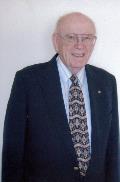
Francis J. Kane graduated from high school in Dunkirk, New York and entered St. Bonaventure College in 1940 and joined the Army ROTC program. In 1943, one year before his scheduled graduation, he was ordered to active duty and attended Officer Candidate School at Fort Sill, Oklahoma.
Upon earning a commission as a Field Artillery second lieutenant, he served with the 11th Field Artillery Battalion, 24th Infantry Division in the Pacific Theater during World War II, to include duty in the Philippians and occupation duty in Japan.
In 1946, his military status was reverted to the Army Reserve and he returned to St. Bonaventure to complete a Bachelor of Science in Chemistry/Physics in 1947. His Nation called Kane again, however, and in 1950 he was recalled to active duty and ordered to attend the General School at Fort Riley, Kansas.
He deployed to Korea and served for twelve months as a Forward Observer and Regimental Liaison and later as a Division Liaison with the Commonwealth Division, a multinational organization comprised of British, Canadian and Australian forces that was part of British Commonwealth Forces Korea.
In 1952, he returned to the United States to attend the Anti-Aircraft Advanced Course and until 1954, to command a battery in the Washington, D.C. Brigade.
Kane attended the Guided Missile Staff Officers Course at Fort Bliss, Texas in 1954 and was branch transferred to Air Defense Artillery. Several postings in a Nike Battalion and additional schooling followed and he was eventually assigned as the OIC of TO&E Development in the Commandant’s Office, Air Defense Artillery School.
From 1960 to 1962, he served as the Executive Officer, 512th Warhead Support Missile Group in Northern Italy before returning to the United States to attend Command and General Staff College at Fort Leavenworth, Kansas. He was assigned as the G3 Briefing Officer for NORAD in Colorado Springs in 1963.
In 1965, Kane was selected as the Senior U.S. Artillery Advisor for the Imperial Hawk Missile System with the Chinese Nationalist Army in Taiwan. He returned to his alma mater in 1967 as the Associate Professor of Military Science at St. Bonaventure University.
Before leaving the University in 1969, he earned a Master of Science degree in Education. In his final year of active service, he served as G2 & G3, Eighth Army Rear Command in Korea. He retired as a colonel in 1970.
Kane’s post-military career included several years with Raytheon Corporation as the coordinator of manpower, equipment and training documentation for the Saudi Arabian Army’s Improved Nike Hawk weapons system. In Saudi Arabia, he established a Patriot Missile Systems School. Kane earned a Doctorate of Education in Higher Education Management/Education Psychology at New Mexico State University in 1973 and taught management courses for 13 years at Webster University’s Fort Bliss site.
Active in the St. Michaels Catholic community and a Past District Governor of the Lions Club, Kane’s numerous military awards include induction into the Order of Saint Barbara. He is also Past Commander of the El Paso Chapter and Department of the Rio Grande, Military Order of the World Wars (MOWW.)
2006 ROTC Hall of Fame Inductees
Lt. Col. (Ret.) USAF Richard J. Alderman, Houghton College Class of 1952
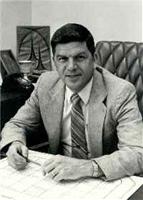
A 1952 graduate of Houghton College, Richard J. Alderman earned a direct commission in the United States Air Force.
After completing basic officer training, he studied meteorology for a year at New York University and was assigned to the 306th Bomb Wing of the Strategic Air Command as Weather Liaison Officer. His duty with this organization included deployments to Africa, The Azores, Great Britain and Puerto Rico.
He completed four years of service and left the Air Force to pursue his calling as an educator, beginning his career as a math and science teacher at Starpoint near Niagara Falls, New York in 1956. Remaining in the Air Force Reserve, he was called to active duty in 1961-62 during the political crises related to Berlin and Cuba.
While mobilized, he served as the Chief Forecaster and Acting Commander of a USAF weather detachment for one year.
After being released from active duty, Alderman continued his career in education, returning to Starpoint for several years before taking a position teaching math and science at Canisteo Central School, where he eventually became principal of the high school.
He continued his teaching career, but chose to remain in the Air Force Reserve, earning promotion to lieutenant colonel after 19 years of service. At this grade, he became the Western New York liaison officer for the U. S. Air Force Academy, and retired in 1985 as a lieutenant colonel with 28 years of service.
That year, he exceeded the four cadet quota and placed ten high school students from Rep. Amo Houghton’s Congressional District as freshmen at the Air Force Academy. For this achievement and service, he was awarded the Air Force Commendation Medal and Air Force Outstanding Unit Award.
Alderman’s ties to Houghton remained strong throughout his teaching career. After serving as president of the Alumni Association in 1972, he joined Houghton College’s administration to organize a recruiting and admission program.
Taking on additional administrative responsibilities as Registrar and Director of Alumni Affairs, Alderman was for 20 years Houghton College’s representative to the Four College Committee, which included St. Bonaventure University.
His professional relationship with Seneca Battalion Hall of Fame member Prof. Leo E. Keenan, who represented St. Bonaventure on the Committee, was instrumental in developing cross-registration agreements between these institutions that allowed Houghton students to take military science courses through St. Bonaventure. A partnership agreement made in 1981 has allowed Houghton College students to earn commissions through the St. Bonaventure University Army ROTC program.
Alderman retired from Houghton in 1991 and taught at Southern Wesleyan University in South Carolina for five years. He has been president of two Rotary clubs and in 2006 served as president of the Houghton Community Association and the Mount Pleasant Cemetery Association.
Often with his wife Gerry, he has volunteered his time and talent in capacities that included volunteering at a children’s home in Macon, Georgia and serving as a driver for the Office of the Aging “Meals on Wheels” program.
Before his retirement from Houghton, his colleagues and students affectionately called Alderman “Mr. ROTC” and the success of many Army officers who are Houghton College graduates ensured his legacy of being “Mr. ROTC” at his alma mater.
Col. (Ret.) Albert LaBarbera, Class of 1952
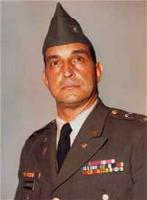
Born in Cuba, New York, Albert LaBarbera graduated from St. Bonaventure University in 1952 with a bachelor of business administration degree and a commission as a Regular Army officer earned through the Army ROTC program.
He graduated from the Field Artillery Basic Officer Course and the Surface to Surface Missile Battery Officer Course at Fort Sill, Oklahoma, and served in a number of artillery officer assignments, including Executive Officer and Battery Commander of the 868th Field Artillery Battalion (280mm), in Germany and S3 of the 523rd Field Artillery Missile Battalion (CPL) at Fort Bliss, Texas.
He completed the Finance Officer Basic Course in 1958 and continued his career in that branch, serving initially as the Deputy Finance Officer of Fort Lee, Virginia until 1960. He completed an MBA in Management from Indiana University in 1961 and was assigned as Advisor to the Comptroller, Turkish Ministry of National Defense and Joint Military Assistance Plans and Programs Officer in Ankara, Turkey until 1964.
In this capacity, he assisted the Turkish Ministry of Defense in the establishment of a Comptroller School by providing curriculum, lesson plans and training aids in the Turkish language and was instrumental in the Ministry of Defense’s adoption of a training model that assured long-term success of the school.
By improving the internal coordination and control of Military Assistance Planning and Programming within the Joint U. S. Mission for Aid to Turkey (JUSMAT), he developed best practices for foreign army training used in future missions.
Following this assignment, he was selected as Deputy Director, Department of Finance and Management Instructor at the U. S. Army Finance School, Fort Benjamin Harrison, Indiana. After completing the Finance Officer Advanced Course in 1967, LaBarbera returned to overseas duty when he joined the 4th Infantry Division in Vietnam as its Finance Officer from 1967-68.
His association with the 4th Infantry Division remained strong, and he became chairman of the 4th Infantry Division Association, Vietnam Chapter, establishing a scholarship fund for children of the Division’s members killed in action and publishing procedures for the handling of funds donated to this cause.
Since its inception, the fund has provided financial assistance to more than 300 children. After serving in Vietnam, he returned to the United States and served as the Assistant Chief, Accounting Division of the Defense Supply Agency before another tour in Germany in 1971, where he was Assistant Chief of Staff, Comptroller for VII Corps.
He completed his active career as a colonel and Director of Centralized Pay Operations, U. S. Army Finance Center, Fort Benjamin Harrison, a post he held from 1974 until his retirement in 1976.
Actively engaged in a variety of community service projects since his retirement, LaBarbera was President of the Lawrence Indiana Exchange Club and in 2005 earned the Outstanding Exchange Spirit Award for his contribution to a September 11, 2001 terrorist attack memorial.
He was named Lawrence 2005 Exchangite of the Year. His military awards include the Legion of Merit with One Oak Leaf Cluster, Meritorious Service Medal with One Oak Leaf Cluster, Joint Service Commendation Medal, Army Commendation Medal, Army of Occupation Medal, National Defense Service Medal with One Service Star, Vietnam Service Medal with 4 Service Stars, Vietnam Campaign Medal, Meritorious Unit Citation, Republic of Vietnam Gallantry Cross Unit Citation and the Republic of Vietnam Civic Action Honor Medal Unit Citation. In August 2002, he was named a Distinguished Member of the Finance Regiment.
1st Lt. Thomas A. Ryan, Class of 1952
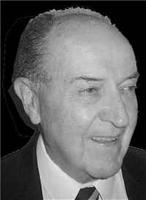
A 1948 graduate of Mount St. Michael High School in the Bronx, Thomas A. Ryan received an academic scholarship to attend St. Bonaventure University.
Enrolling as an English major, he joined the Army ROTC program and was a Distinguished Military Graduate of the Class of 1952. He was commissioned a Second Lieutenant, Infantry in the Regular Army while the war in Korea was at its height.
He graduated from the Infantry Officer Basic Course and served in several positions in Japan and Okinawa. After three years as an Army officer, he applied for and received an appointment in 1956 to the Central Intelligence Agency, in which he served for thirty-five years.
During his career in the CIA, Ryan was stationed at various times in Brazil, Thailand, Australia and Japan. Perhaps his most significant service, however, was his work as the CIA Station Chief in Warsaw, Poland from 1980 to 1982.
His assignment to the post coincided with Lech Walesa’s historic movement of shipyard workers at Gdansk, which eventually became known as Solidarity, against Soviet dominated oppression of the Poles. The Soviets were increasingly concerned about this challenge to their authority and had determined to suppress this opposition by military means if necessary, which would have resulted in a catastrophic confrontation with NATO.
The New York Times’ Benjamin Weiser detailed Ryan’s work in Poland are in his book, A Secret Life: The Polish Officer, His Covert Mission, and the Price He Paid to Save His Country. Ryan became associated with Colonel Ryszard J. Kuklinski, a highly placed member of the Polish General Staff from whom the CIA received uniquely valuable intelligence about the intentions and plans of the Soviet Union and the Warsaw Pact for more than nine years.
Kuklinski’s one-man war against the Soviet Communists required Ryan to protect the officer in November 1981, when Kuklinski was about to be exposed and arrested for being a spy. Ryan and his wife, Lucille, placed themselves at considerable personal risk in order to pick up Colonel Kuklinski, his wife, and two grown sons on a remote street corner and smuggle them into the U. S. Embassy, from which another Station team carried them out of Poland the same night.
The intelligence that Colonel Kuklinski provided included Soviet plans for a possible invasion of the West through Poland and the plans to suppress Solidarity by military means if necessary.
Ryan continued as Station Chief in Warsaw through the imposition of Martial Law in August, 1982. It was on his watch that a worldwide catastrophe was avoided because of the station’s adept handling of its informer, and the use of his intelligence. The Soviet fears regarding the Polish challenge to their authority were well founded, as this became the first step in the peaceful dissolution of the Soviet Union.
He retired from government service in 1991, but continued to work with the agency as a contractor. In 2006, Ryan received St. Bonaventure University’s the University’s Gaudete Medal, honoring joyful service in the humble spirit of St. Francis of Assisi, in recognition of his outstanding work and service to his country for more than 35 years, including the role he played during the rise of Solidarity and the Lech Walesa years in Poland.